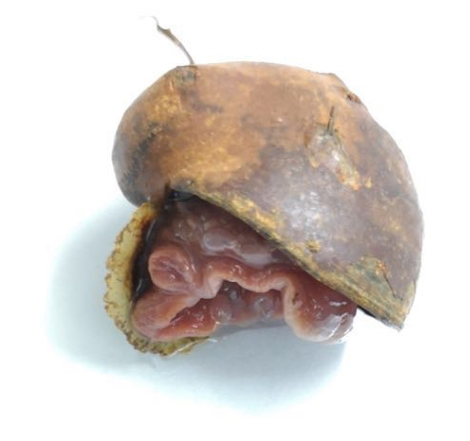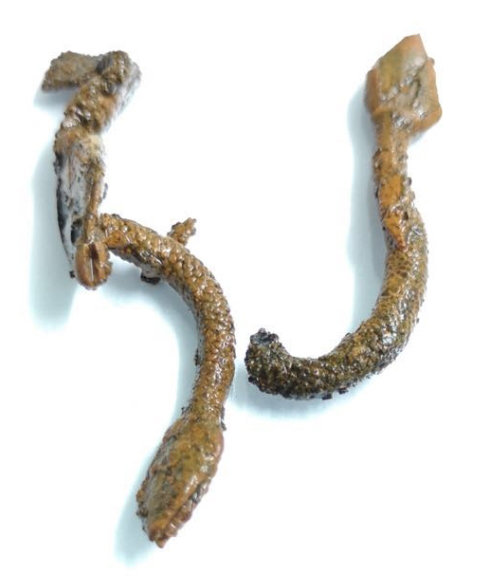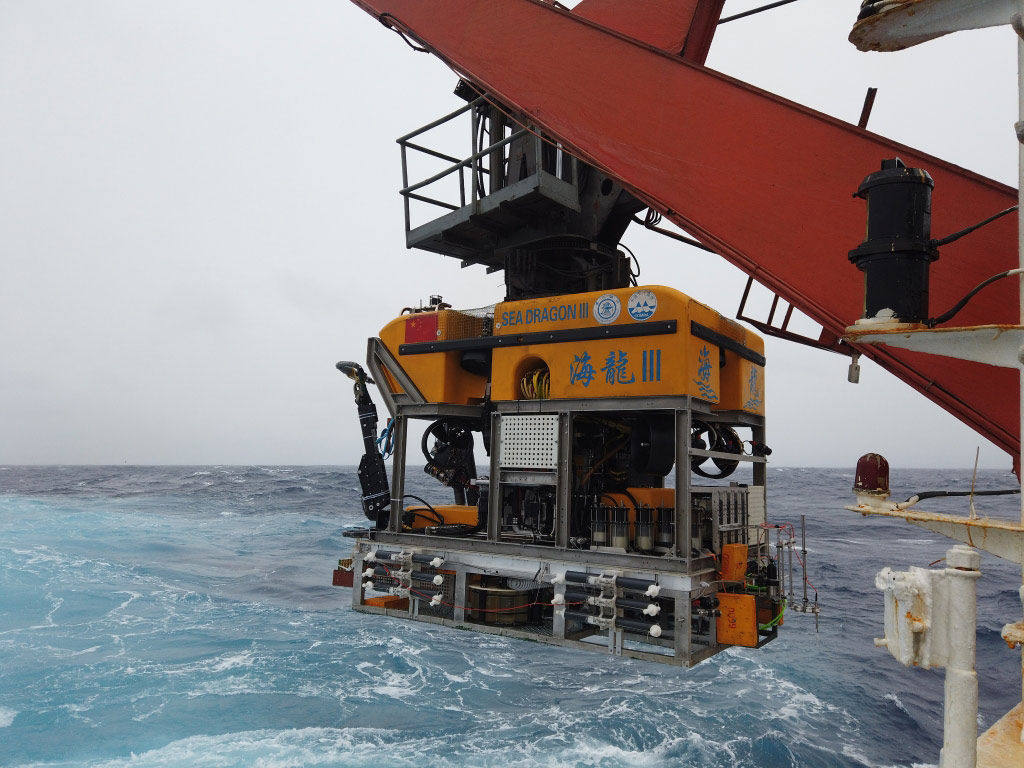China's Unmanned Submersible
At one o'clock on April 9 local time, on the board of Ocean No.1 that is executing its 52nd cruise mission with the approval from the Ministry of Natural Resources, "Hailong III", the developed-in-China underwater remotely operated vehicle (ROV) with a max depth of 6,000 meters, successfully completed its diving mission in the Longqi hydrothermal-fluid vent on the Southwest Indian mid-ocean ridge. It descended 3 times in 4 days, with its longest close observation work of 6 hours. It collected many samples of large benthic animals, clean water, benthic fishes and deep-sea sediment and so on, and has measured many parameters on the spot. |
|
The "Hailong III" ROV is a new generation of home-made, high-power and operational underwater unmanned remote submersible, funded by COMRA and developed by professor Ge Tong with his team from Shanghai Jiaotong University. It is especially suitable for deep-sea scientific investigation. "Hailong III" ROV has two main advantages. The first one is that it can observe and sample near the bottom of the sea in large span and long distance. The second is that it can operate with a fixed point and refined ability. In this section, with the cooperation of its mother ship Ocean No.1, "Hailong III" ROV, equipped with multiple self-developed monitoring probes and sampling equipment, completed many functional target tasks such as multi-parameter testing in the hydrothermal area, fixed-point sampling, target object delivery, joint cooperation between the mother ship and ROV, near-bottom long-distance observation and photography and video shooting. |
|
Professor Ge Tong, the chief designer of Hailong system, introduces that in order to complete this task, ROV has had some professional upgrades and improvements on its on-board equipment before its cruise. It carried many sampling equipment like a domestic laser raman spectrometer, CTD sensors group, microelectrode, large capacity container for clean water collection, temperature probe and macroscopical biological sampler. It was loaded with about 350 kg underwater, has more than 20 types of interfaces. And its operation process involves biological observation, photography, video shooting, clean water sampling, sediment intubation sampling, rock and sulfide sampling and biological sampling. A team led by Wang Xuyang for field equipment renovation and upgrading was dispatched to adjust the functions of their equipment in time according to the actual complex sea conditions, greatly improving its field operation ability. Sun Chengjun, chief scientist of the third session of the Ocean No.1's 52th cruise said that the "Hailong III" now features stable performance, flexible operation mode, multiple sampling measures and skillful self-manipulation. It can operate underwater in a long time and the samples it collect are of great importance to building environment baseline and increasing knowledge about the eco-system in the mid-ocean ridge of Indian Ocean. |






